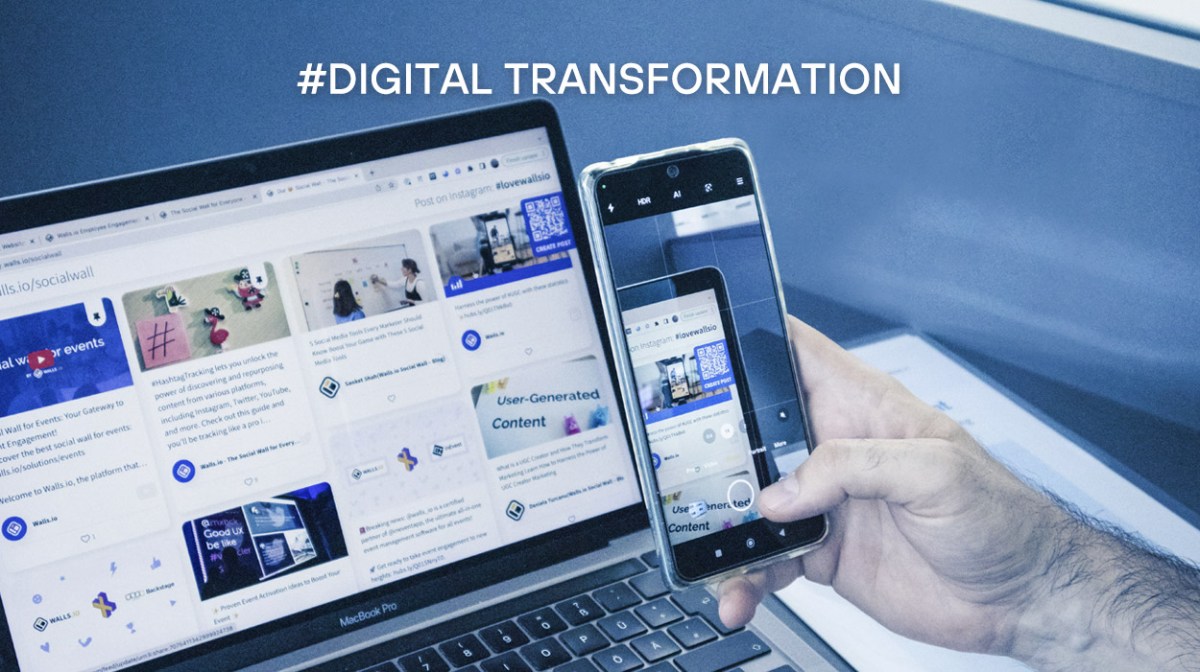What is digital transformation?
Digital transformation is the process by which companies integrate digital technologies in all areas, fundamentally changing the way they operate and provide value to their customers.
This process involves not only the adoption of new technologies, but also a cultural and organisational restructuring that allows companies to take full advantage of the opportunities they offer.
In other words, digital transformation confronts companies with a scenario in which they are continually redefining their status quo, experimenting and adapting to successes and failures on an ongoing basis.
How is digital transformation impacting today?
Digital transformation is currently revolutionising multiple sectors by improving operational efficiency, optimising the customer experience and opening up new business opportunities.
Companies such as the Telefónica Group are leading this change by implementing innovative solutions ranging from 5G connectivity to Artificial Intelligence, including Cybersecurity, Cloud, IoT and Big Data, thus facilitating the digitisation of processes and services.
What are the benefits of digital transformation?
Some of the main benefits of digital transformation include:
- Improved operational efficiency. Process automation and cost reduction.
- Improved decision making. Real-time data analysis for more informed
- Optimisation of the customer experience. Personalisation and improved customer satisfaction.
- Operational efficiency. Process automation and cost reduction.
- New business opportunities. Innovation and access to new markets.
- Greater agility and flexibility. Rapid adaptation to market changes. What are the main characteristics of digital transformation? The key characteristics of digital transformation are: Technological integration. Use of technologies such as IoT, artificial intelligence, cloud..
What are the main characteristics of digital transformation?
The key characteristics of digital transformation are:
- Technological integration. Use of technologies such as IoT, artificial intelligence, cloud computing, big data or blockchain.
- Culture of innovation. Fostering an environment that promotes experimentation and continuous learning.
- Customer focus. Focus on satisfying and anticipating customer needs.
- Operational efficiency. Automation and optimisation of internal processes.
- Organisational agility. Ability to adapt quickly to changes and new opportunities.
Can you give us an example of digital transformation?
Telefónica Empresas and Telefónica Tech develop numerous technological solutions so that, depending on the degree of digitisation of each client, we can help them evolve in their comprehensive digital transformation process through the efficient use of technologies.
As an example, at the recently concluded MWC2025, we presented solutions such as Open Gateway 5G Drones, which enable the transport of medical equipment, fire prevention and logistics management for any company or public administration.
Or Quantum Safe Networks, an innovative proposal offering secure private 5G networks with quantum encryption. Customers such as Vithas have already managed to connect several of their hospitals, guaranteeing that each patient’s information remains secure and unaltered, now and in the future.
And we cannot forget how, through the incorporation of AI into the workplace at Prosegur, we have given 24,000 employees of the security company direct access to Telefónica’s virtual assistant, GenIA, to manage their work environment. A great digital transformation project for the client. AI will allow them to be more autonomous and grow professionally, giving them more capacity to perform new operational functions as they are freed from more repetitive tasks to focus on those that are complex and add greater value.
What is the difference between digitisation and digital transformation?
Although they may seem like terms that can be used interchangeably, they have different meanings: digitalisation refers to the process of converting analogue information or processes into digital formats. It is a technical and specific change that usually focuses on specific tasks and has a mainly operational impact. It improves existing processes without changing the essence of the business where they are implemented.
Meanwhile, digital transformation involves a more profound restructuring, where digital technologies are integrated into all aspects of a company. It involves a strong cultural and structural change, varying its business model and the way it operates.
Which is more relevant, digitisation or digital transformation?
Although digitisation is an essential first step, digital transformation is more relevant, as it not only involves the adoption of digital technologies, but also, as mentioned above, a comprehensive cultural and organisational change that allows companies to be more agile, innovative and customer-focused.
Which technologies are the most relevant for digital transformation?
Key technologies for digital transformation include:
- Internet of Things (IoT). Connects devices and systems to collect and analyse data in real time.
- Artificial Intelligence (AI). Allows processes and decision-making to be automated by obtaining valuable insights from large volumes of data.
- Big Data. Management and analysis of large data sets to improve decision-making.
- Blockchain. Offers security and transparency in digital transactions.
- Cloud computing. Provides flexible and scalable access to computing resources.
What role does Artificial Intelligence play in digital transformation?
Artificial Intelligence is fundamental to digital transformation, as it enables:
- Automation of repetitive tasks. Freeing up human resources for higher value activities. An example is chatbots that handle basic customer queries for any company or public administration.
- Predictive analysis. Anticipation of market trends and behaviours. Using Machine Learning techniques, AI analyses large volumes of data to identify patterns and make accurate predictions.
- Personalisation of services. Adaptation of products and services to the individual needs of customers. A clear example is the use of recommendation algorithms on streaming or e-commerce platforms.
- Operational optimisation. In the manufacturing industry, AI improves predictive maintenance by identifying machine problems before failures occur, thus reducing downtime and repair costs.
- Advanced cybersecurity. Using behavioural analysis and anomaly detection, AI identifies potential threats and vulnerabilities in systems, protecting sensitive data and business networks.
What would the world be like without digital transformation?
It would be different. Without digital transformation, companies would find it difficult to adapt to the demands of the modern market, resulting in less efficient processes, lower competitiveness and a poorer customer experience. In addition, the opportunities for innovation and growth facilitated by digital technologies would be lost. In short, a more disconnected, less relational and perhaps
